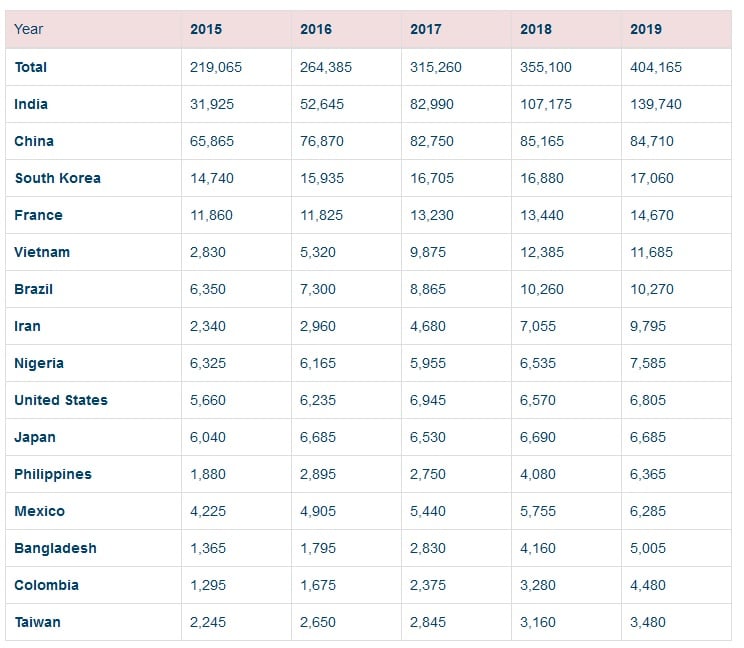Canada welcomed more than 400,000 new international students in 2019
Canada had yet another major year in international student recruitment as it approved 404,000 new study permits in 2019.
A study permit is a document issued by Immigration, Refugees and Citizenship Canada (IRCC) that allows foreign nationals to study at a designated learning institution in Canada.
The number of study permits issued is a different metric from the total number of international students in Canada. IRCC has yet to release data on Canada’s international student population in 2019. However, the newly-released study permit approval data strongly suggests that the population now exceeds 600,000. If this proves to be the case, Canada’s international student population will have tripled since 2009, when it stood at 200,000 people.
Top 10 international student source countries
India remains the leading international student source country by a wide margin. In 2019, nearly 140,000 study permits were issued to Indian nationals, representing 35 per cent of all study permits issued.
Chinese nationals received 85,000 study permits or 21 per cent of all those issued.
South Korea was a distant third at 17,000 study permit or 4 per cent of the total.
Rounding out the top ten were France, Vietnam, Brazil, Iran, Nigeria, the United States, and Japan.
Study permits by country of citizenship and year they became effective

Source: Immigration, Refugees and Citizenship Canada; CIC News.
Find out if you are eligible for any Canadian immigration programs
Where the growth is coming from
Growth in Canada’s international student population is concentrated in a few source countries. Again, India leads the way, with the number of study permits issued to Indian nationals having more than quadrupled since 2015.
Growth is also coming from Vietnam. Whereas only 3,000 Vietnamese students received study permits in 2015, this figure has since grown to 12,000.
Iran is another important source of growth, with the number of study permits issued to Iranians quadrupling to nearly 10,000 in 2019 compared with 2015.
Brazil, the Philippines, Bangladesh, Colombia, Turkey, Morocco and Algeria are among the source countries that have posted growth rates of at least 60 per cent compared with 2015.
Why international students are coming to Canada
Canada now has the fourth-largest international student population in the world behind the United States, the United Kingdom and Australia.
According to research by the Canadian Bureau for International Education, international students are drawn to Canada by the quality of education provided by its universities and colleges.
They are also drawn by Canada’s reputation as an open and welcoming society.
The relatively weak Canadian dollar is another factor. While international students pay higher tuition fees than Canadian students, the expenses they incur in Canada are more affordable than those incurred by international students in other top destinations.
Perhaps Canada’s greatest advantage is its study-work-immigrate package.
International students are eligible to work in Canada to support themselves financially during their studies. Upon completing their studies, many of them are eligible to obtain a Post-Graduation Work Permit so that they can gain more Canadian work experience for a period of up to three years.
They can then apply for the more than 80 economic class immigration programs offered by the federal government as well as provinces and territories. Many of these programs give preference to former international students in their selection criteria since federal government research shows that former international students integrate very quickly into the Canadian economy.
As the global population of international students continues to grow and Canada becomes increasingly attractive as a study destination, it seems likely that the country’s international student intake will continue to experience solid gains in the coming years.
Find out if you are eligible for any Canadian immigration programs
Kareem El-Assal is the Director of Policy & Digital Strategy at CanadaVisa. 
© 2020 CIC News All Rights Reserved
- Do you need Canadian immigration assistance? Contact the Contact Cohen Immigration Law firm by completing our form
- Send us your feedback or your non-legal assistance questions by emailing us at media@canadavisa.com







